10月20日(第3週)高見英樹 氏October 20, 2011 Talk by Hideki Takami
公開日:2011年9月27日
投稿者:sakaguchi
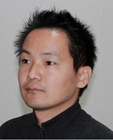
高見英樹 Takami, Hideki
文部科学省大臣官房文教施設企画部
施設助成課課長補佐
学校は公共施設の中でも大きな割合を占める身近な施設であるとともに、次世代を担う子どもたちの学習・生活の場でもあることから、そのエコ化を全国的に進めることにより、広く社会への波及効果が期待できます。本講義では、小・中・高等学校や大学などの学校施設のエコ化をどのように進めていくかについて、国や地方公共団体、大学等の取組を紹介しながら、皆様と議論をしたいと考えています。
2002年に入省後、学校安全や耐震化、教科書検定・採択、国立大学施設の中長期計画の策定などの業務に携わる。2011年4月より現職で、学校施設のエコスクール化などを担当。
一級建築士。
参考資料
- 「東日本大震災の被害を踏まえた学校施設の整備について」緊急提言(平成23年7月 東日本大震災の被害を踏まえた学校施設の整備に関する検討会)
- 「知の拠点 我が国の未来を拓く国立大学法人等施設の整備充実について」(平成23年8月 今後の国立大学法人等施設の整備充実に関する調査研究協力者会議)
参考サイト
高見氏が育児休業の経験をつづった、読売新聞ウェブでの連載記事です。
Mr. Hideki Takami, who belongs to the Ministry of Education, Culture, Sports, Science and Technology, is a member of the Eco-School Program. Eco-School means an ecological school which has some facilities suitable for environmental sustainability and commits ecological activity. In short, he is concerned with making policies to spread Eco-School.
The concept of Eco-School is made up of three important factors. The first is to build facilities which are friendly for both users and the environment. The second is to keep each facility available over the long term by utilizing natural energy technologies and so forth. The last factor is to make use of itself for the environmental education. By the way, why is Eco-School so important? There are three reasons.
 Firstly, it is effective for decreasing CO2 emissions from schools. They consume much energy among public facilities. Second, it is important for spreading the environment-friendly idea. Schools are not only places for pupils to study but also familiar facilities to local people, so schools have a big influence on their attitudes. Lastly, it can lead to a disaster measures. Schools are regularly assigned as emergency evacuation centers. Thus, natural energy, which could be used on occasional blackouts, is important.
Firstly, it is effective for decreasing CO2 emissions from schools. They consume much energy among public facilities. Second, it is important for spreading the environment-friendly idea. Schools are not only places for pupils to study but also familiar facilities to local people, so schools have a big influence on their attitudes. Lastly, it can lead to a disaster measures. Schools are regularly assigned as emergency evacuation centers. Thus, natural energy, which could be used on occasional blackouts, is important.
However, the budget for Eco-School Program is limited because of the severe financial condition these days and that limitation is a large obstacle to the project.
(Report by Saito)
1月12日(第11週)奈尾信英先生紹介January 12, 2012 Talk by Dr. Hideaki Nao
公開日:2011年9月27日
投稿者:sakaguchi
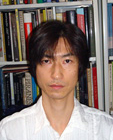
奈尾信英 Nao, Nobuhide
東京大学大学院総合文化研究科講師
今日、都市人口の増加とそれに伴う都市の貧困化は、世界規模で展開しています。われわれが住んでいる都市環境を持続させるためにはどうすればよいのか、本講義を通して考えていきましょう。
1966年、東京生まれ。
東京大学大学院工学系研究科建築学専攻博士課程(建築意匠)修了。博士(工学)。
専門は、建築設計学:都市建築意匠論・都市建築空間史・図学史。
東京大学大学院工学系研究科建築学専攻客員研究員を経て、現在、東京大学大学院総合文化研究科広域科学専攻広域システム科学系情報図形科学部会(図形科学Iおよび図形科学IIを担当)。青山学院大学理工学部、芝浦工業大学工学部、東京電機大学理工学部、東京家政大学家政学部、日本大学生産工学部、国士舘大学21世紀アジア学部、国立東京工業高等専門学校情報工学科、兼任講師。
大学共同利用期間法人人間文化研究機構総合地球環境学研究所研究メンバー。
参照サイト
オランダのサイトを中心に、都市建築に関する参照先を紹介していただきました。
- http://www.oma.nl/
- http://www.unstudio.com/
- http://www.mvrdv.nl/
- http://www.west8.nl/
- http://www.mecanoo.nl/
- http://www.wielaretsarchitects.nl/
About Urban design with Dr. Nao
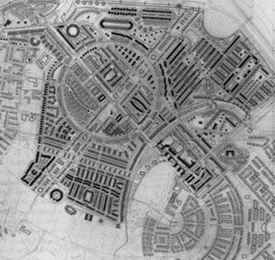
Our team gathered information about Dr. Nao. He is specialized in architecture in the University of Tokyo, and these days he is engaged in urban design. He wrote a report named “Urbanism Projects of the 90’s.“In this report, he studied urbanization in Rome, Berlin, Paris, and so on. Reading this report, we realized that he valued both artistic design and sustainability.
He has given a message saying that today, the number of people living in cities is increasing and consequently the poverty would get worse in many parts of the world. He invited us to ponder how we can maintain the environment of the growing cities.

Urban designs which are caring the environment and historical scenery have become more successful in Europe than in Japan, so I would like to compare these several countries in Europe with Japan, and see the circumstances of the cities in the Netherlands, confirming whether the theories I’ve learned can be applied to the real issues in cities.
(Report by Ikeda)
11月10日(第5週)田村正道氏紹介November 10, 2011 Talk by Masamichi Tamura
公開日:2011年9月27日
投稿者:sakaguchi
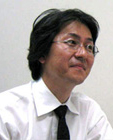
田村正道 Tamura, Masamichi
(株)類設計室 ディレクター
21KOMCEE(理想の教育棟)建設プロジェクトは、東京大学の先生方や職員の皆さん、そして私たち設計者を含め、多くの関係者による協働作業として進められました。21KOMCEE(理想の教育棟)の建築設計にあたっては、「アクティブ・ラーニング」「周辺環境との共存」「ゼロ・エネルギー・ビル」の3つをコンセプトとし、理想の教養教育の場にふさわしい空間デザインと環境技術のあり方を追求してきました。
ゼミ当日は、21KOMCEE(理想の教育棟)建設プロジェクトにおける思考と実現の軌跡を紹介し、それらを通して、人、環境、建築・都市計画の調和のあり方について、その一端をお話できればと思います。現代社会は、地球環境危機と循環型社会への転換、災害への備え、経済危機への対応等、多くの課題を抱えています。建築・環境分野のみならず、あらゆる仕事において、これらの社会的課題に真摯に向き合い、答えを出していくことが求められます。そのためには、自然の摂理に学ぶこと、歴史や先人の経験に学ぶこと、そうした学び続ける姿勢がとても大事なのではないかと感じています。
皆さんとお会いできることを楽しみにしています!
1962年 京都生まれ
1985年 東京芸術大学美術学部建築科卒業
1985年~類設計室、現在、東京設計室ディレクター
主な設計実績
東京大学工学部新2号館、同工学部新3号館
日本大学文理学部新教室棟、同生物資源科学部60周年記念棟
さいたま地家裁熊谷支部庁舎、甲府法務総合庁舎、浦安市立高洲小学校 など
参照文献・Webサイトなど
21KOMCEE(理想の教育棟)掲載誌
- 日経アーキテクチュア特別編集版 これからの学校2011(2011年6月25日発行)
- 日刊建設工業新聞2011年6月20日
類設計室
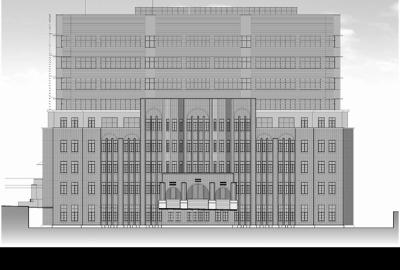 Mr. Masamichi Tamura is an architect of RUI SEKKEISHITSU Co., Ltd., who designed and supervised the construction of the 21 KOMCEE.
Mr. Masamichi Tamura is an architect of RUI SEKKEISHITSU Co., Ltd., who designed and supervised the construction of the 21 KOMCEE.
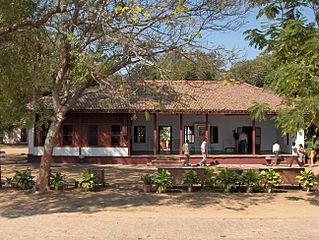
In order to design an ideal building for education, Mr. Tamura sought some hints in the history of universities. At the beginning, an institution for higher education was a place not only to learn, but also to live. At that time, learning and culture advanced dramatically by exchanging diverse ideas through the life in ashrams. The 21 KOMCEE is designed to be the environment like the root of higher educations.
The architectures also considered harmony of the 21 KOMCEE with other buildings in Komaba Campus. There are mainly 3 points to which the designers paid attention. First, it was designed to be a low building, and a basement was utilized in order to keep a good landscape of the campus. Second, the established position of the building was set to maintain the path of traffic in the campus. Third, the architectures and the constructors paid a lot of efforts to devise the shape and exterior in consideration for not cutting a large symbolic tree nearby the building but for harmonizing with it.
The leading-edge technology is applied to the 21 KOMCEE aiming at Zero Energy Building (ZEB). The air conditioning system using geothermal heat, lighting apparatus, double skin window system and more are controlled by the AI network which comprises the Building and Energy Management System (BEMS).
(Report by Kaneko)
12月8日(第8週)磯部雅彦先生紹介
公開日:2011年9月26日
投稿者:sakaguchi

磯部雅彦 Isobe, Masahiko
TSCP室長
東京大学大学院新領域創成科学研究科社会文化環境学専攻教授
地球の持続性を確保するためには、省エネルギーが不可欠です。
本講義では、大学における省エネルギーの試みを幅広く紹介します。
1975年 東京大学工学部土木工学科卒
1981年 工学博士(東京大学)
1983年 横浜国立大学工学部土木工学科助教授
1992年 東京大学工学部土木工学科教授
1999年 東京大学大学院新領域創成科学研究科環境学専攻教授
2006年から東京大学大学院新領域創成科学研究科社会文化環境学専攻教授として現在に至る
2009年4月から2011年3月まで副学長
- 専門分野
- 海岸工学、沿岸域環境
- 著書
- 海岸環境工学(東大出版、共著)、海岸波動(土木学会、共著)、海岸の環境創造(朝倉書店、編著)等
- 主な社会活動等
- 日本沿岸域学会理事・会長、土木学会理事・副会長等を歴任。
現在、内閣府総合海洋政策本部参与、中央防災会議専門調査会委員、社会資本整備審議会・交通政策審議会交通体系分科会計画部会委員、交通政策審議会港湾分科会防災部会委員、海岸における津波対策検討委員会委員長等。
参考資料
駒場祭での学術企画
公開日:2011年9月26日
投稿者:sakaguchi
「理想の教育棟」ゼミで、2011年の駒場祭に出展を予定しています。
- 企画名
- 「理想の教育棟」サステイナブルキャンパス発信ゼミ
- 団体名
- 教養教育高度化機構
- 企画内容の説明
- 21 Komaba Center for Educational Excellence(21 KOMCEE/通称:理想の教育棟)に込められた数々な工夫や試みを、写真やパネルでゼミのメンバーが解説します。
キーワードは「学びの空間」「知の泉」「Zero Energy Building (ZEB)」です。
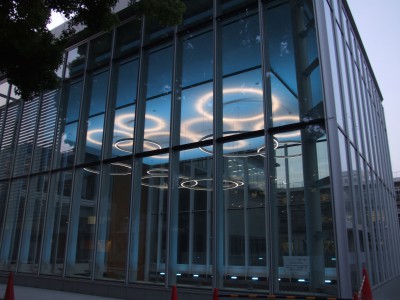
小宮山先生のインタビュービデオを公開しました!
2011年冬学期 全学自由研究ゼミナールSeminar Syllabus 2011 Winter
公開日:2011年9月6日
投稿者:sakaguchi
教養教育高度化機構では、2011年冬学期の21 KOMCEE(理想の教育棟)の授業利用開始に伴い、21 KOMCEEでのインタラクティブな授業から社会に対して成果を発信する全学自由研究ゼミナールを開講します。
チーム形成部門坂口菊恵とアクティブラーニング部門の林一雅先生がコーディネーターをつとめます。
テーマはサステイナビリティ。
 サステイナビリティとは、人間の生活に伴う環境負荷の低減から、少子・高齢化社会の問題、生物多様性の保護、食糧問題など多様な分野にわたって、持続可能な社会実現に向けて必要な活動をさぐる学問のテーマです。
サステイナビリティとは、人間の生活に伴う環境負荷の低減から、少子・高齢化社会の問題、生物多様性の保護、食糧問題など多様な分野にわたって、持続可能な社会実現に向けて必要な活動をさぐる学問のテーマです。
今年度は、「理想の教育棟」という駒場に新しくできたシンボリックな建物をテーマに、教育施設の設計から低環境負荷の実現や環境教育のあり方を考えていきます。
講義題目は「理想の教育棟」から世界標準のサステイナブルキャンパスを考える。
木曜5限(16:20-17:50)に、K303(21 KOMCEEスタジオ教室)で開講します。
ゼミナールでは、こうした問題に対し第一線で実務や研究に携わっておられる方々を講師としてお呼びします。
ただ講演をうかがうだけではなく、講師の方々が話題とされるテーマについて学生の側が自分たちで調べておくことで、疑問点を率直に投げかけ、活発な議論が進むことを期待しています。
講師陣の方々・予定されているトピックは以下のようです。
- 第1週
(10月6日) - 坂口菊恵特任講師・林一雅特任助教
ゼミナールの進め方に関するガイダンス - 第2週
(10月13日) - グループワーク
(駒場) - 第3週
(10月20日) - 高見英樹 文科省大臣官房文教施設企画部施設助成課課長補佐
日本の学校施設のエコ化について - 第4週
(10月27日) - コクヨとのグループワーク
(駒場) - 第5週
(11月10日) - 田村正道 類設計室一級建築士
21 KOMCEE建築意匠に込められた工夫 - 第6週
(11月17日) - コクヨとのグループディスカッション
(駒場と品川をつないで) - 第7週
(12月1日) - 大岡龍三 生産技術研究所教授
地中熱利用によるZero Energy Building実現 - 第8週
(12月8日) - 磯部雅彦 TSCP室長
東京大学のサステイナビリティキャンパス化への取り組みと21 KOMCEE - 第9週
(12月15日) - グループワーク
(駒場) - 第10週
(12月22日) - 大倉紀彰 環境省環境保健部企画課課長補佐
低炭素まちづくり:水俣全体をキャンパスにサスティナブルな地域を考える - 第11週
(1月12日) - 奈尾信英 広域システム科学系情報図形科学講師
建築意匠・環境負荷軽減を考慮したヨーロッパの街づくり - 第12週
(1月19日) - 住 明正 東京大学サステイナビリティ学連携研究機構教授
地球温暖化について/サステイナビリティ学とは何か - 第13週
(1月26日) - グループワーク
(駒場)
春休みに、1週間程度オランダへのフィールドワークを予定しています。
随行人数については人数制限をする可能性があります。
参加者全体に対する人数制限は特に設けません。
参加者はゼミナールで得た知見を授業のウェブサイトや駒場祭での展示などを通じてプレゼンテーションすることが求められます。授業時間外の作業も必要になります。
成績評価法
授業への参加、プレゼンテーション
教科書
- 小宮山 宏 『低炭素社会』幻冬舎新書
参考書
- 小宮山 宏 『地球持続の技術』岩波新書
- 今泉 みね子『ドイツを変えた10人の環境パイオニア』白水社
In line with the opening of the 21 Komaba Center for Educational Excellence (21 KOMCEE), an interactive seminar which communicates with wider society taking advantage of the new facilities will be held by the faculties for Komaba Center for Educational Excellence (KOMEX) .
Coordinator
Kikue Sakaguchi: Junior Scholars Collaborative Initiative, KOMEX
Kazumasa Hayashi: Division for Active Learning and Teaching, KOMEX
Key words
Sustainability, Active Learning, Architecture Design, City Planning
 Sustainability is a key word which integrates various academic fields tackling for the realization of sustainable society―the reduction of environmental burdens, how to respond to the declining birthrate and the aging society, conservation of biodiversity, solution to food problem, and so forth.
Sustainability is a key word which integrates various academic fields tackling for the realization of sustainable society―the reduction of environmental burdens, how to respond to the declining birthrate and the aging society, conservation of biodiversity, solution to food problem, and so forth.
The aim of this seminar is to study strategies for realization of lowering environmental burdens and prospects of environmental education from the perspective of educational facility planning.
The 21 KOMCEE, the newly build symbolic structure in Komaba campus, will make a good theme for our study.
Therefore, we placed Study Worldwide Model of Sustainable Campus, Starting from the 21 KOMCEE on the agenda.
- Hour: the fifth period(16:20-17:50), on Thursday
- Place: K303, 21 KOMCEE
To gain knowledge which would be needed to study worldwide model of sustainable campus, starting from the 21 KOMCEE, we’ll engage the services of experts at the forefront of this filed as lecturers.
Students are expected to make research on topic held by the lecturer so that there will be stormy discussion.
Schedule
- 1st week (10/6)
- Guidance of this seminar
Lecturer Kikue Sakaguchi; assistant professor Kazumasa Hayashi - 2st week (10/13)
- Student’s discussion and work@KOMABA
- 3rd week (10/20)
- Eco friendly design of school buildings in Japan
Hideki Takami from the Ministry of Education, Culture, Sport, Science and Technology - 4th week (10/27)
- Pre-group work with KOKUYO FURNITURE Co.,Ltd. @KOMABA
- 5th week (11/10)
- Ingenuity exercised in constructing and designing the 21 KOMCEE
Masamichi Tamura first-class registered architect from RUI architect’s office - 6th week (11/17)
- Online group discussion between students@KOMABA and business persons@ KOKUYO FURNITURE Co.,Ltd., Shinagawa, on 2012 KOKUYO Faire
- 7th week (12/1)
- Realizing Zero Energy Building by utilizing geothermal energy
Professor Ryozo Ooka from the Institute of Industrial Science, the University of Tokyo - 8th week (12/8)
- What the University of Tokyo has grappled with sustainablizing their campus, and the construction of the 21 KOMCEE
Professor Masahiko Isobe the general manager of TSCP (Todai Sustainable Campus Project) - 9th week (12/15)
- Student’s discussion and work@KOMABA
- 10th week (12/22)
- What Japanese government has achieved as a countermeasure for global warming
Noriaki Okura from the Ministry of Environment - 11th week (1/12)
- Learn from town planning in Europe from the perspective of design and ecology
Lecturer Nobuhide Nao from the Department of General Systems Studies, the University of Tokyo - 12th week (1/19)
- What is sustainability as an academic filed?/ all about global warming
Professor Akimasa Sumi TIGS (Transdisciplinary Initiative for Global Sustainability) chief director, AGS (Alliance for Global Sustainability) promotion general manager, and IR3S (Integrated Research System for Sustainability Science) professor as an additional post - 13th week (1/26)
- Student’s discussion and work@KOMABA
Fieldwork in the Netherlands for about a week is planned when this semester is over. There might be limitation of numbers for this fieldwork but not for the seminar itself.
Students are required to give presentations about what you’ve learned through the seminar. For your presentation, our website or KOMABA Festival will offer the opportunities.
Evaluation
Evaluation will be based on your attitude in the seminar and your presentation.


